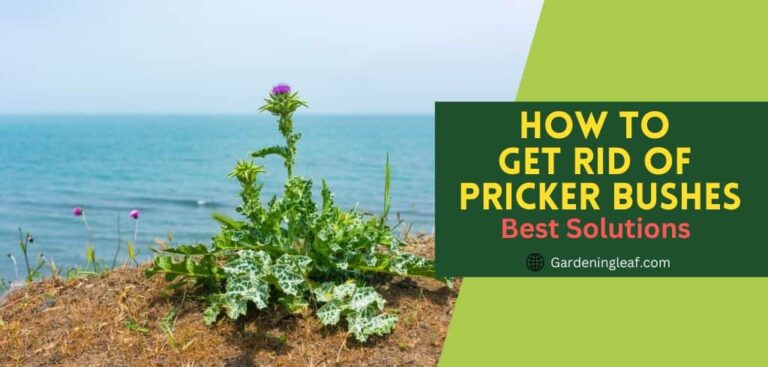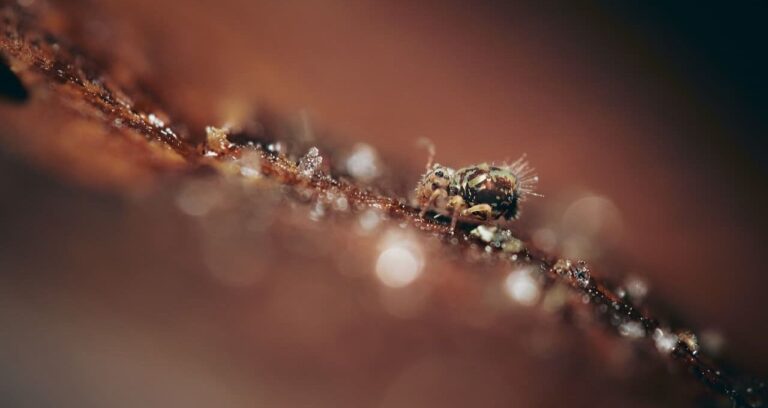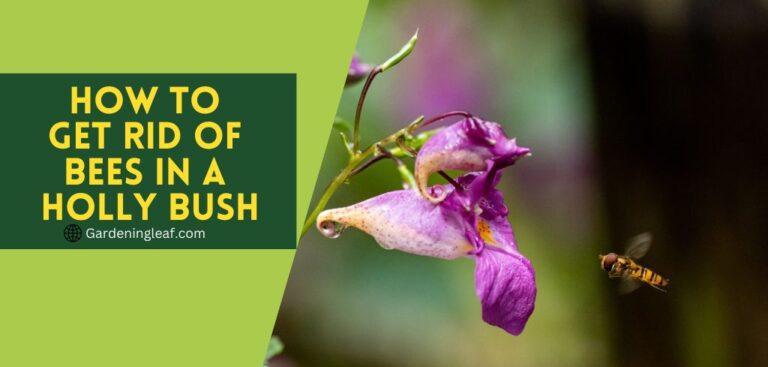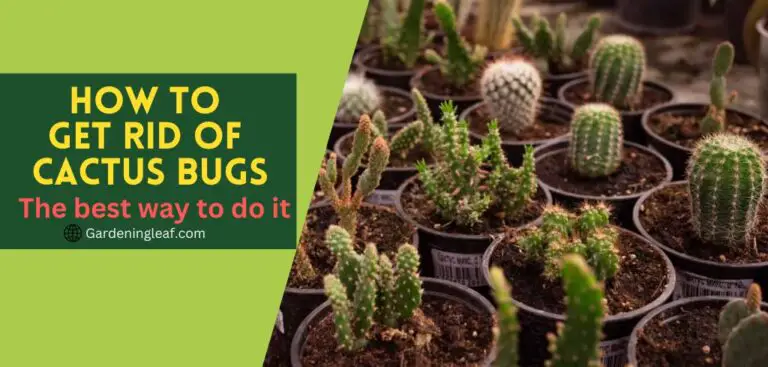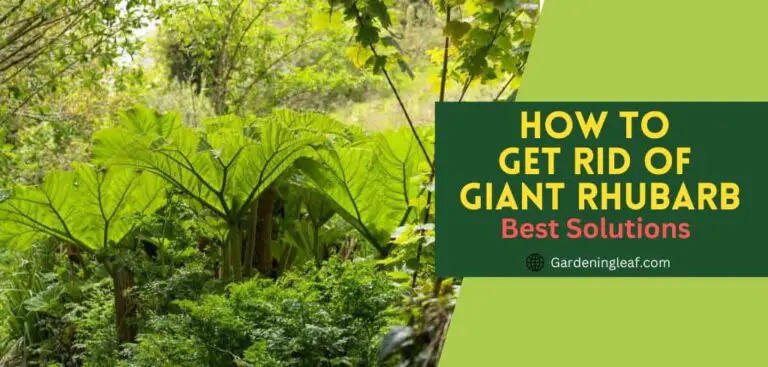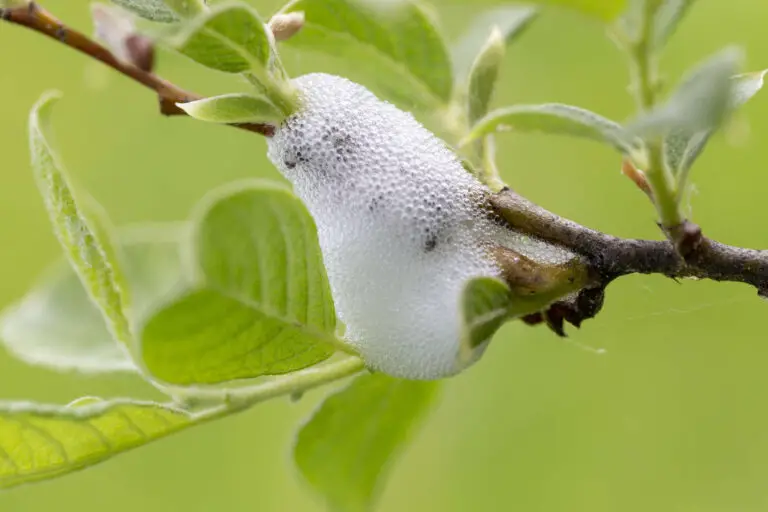How to Get Rid of Purslane in the Garden – 6 Easy Way
Are you struggling to get rid of Purslane in your Garden? If so, you’re not alone. This weed can be a real pain to get rid of, but there is an easy way to get rid of Purslane in the Garden.
Purslane is a weed that will swiftly take over your Garden if you’re not careful. It’s not only intrusive but also tricky to get rid of. In this blog post, we’ll explain How to Get Rid of Purslane in the Garden so that you can quickly get your Garden back in control!
What Is Purslane?
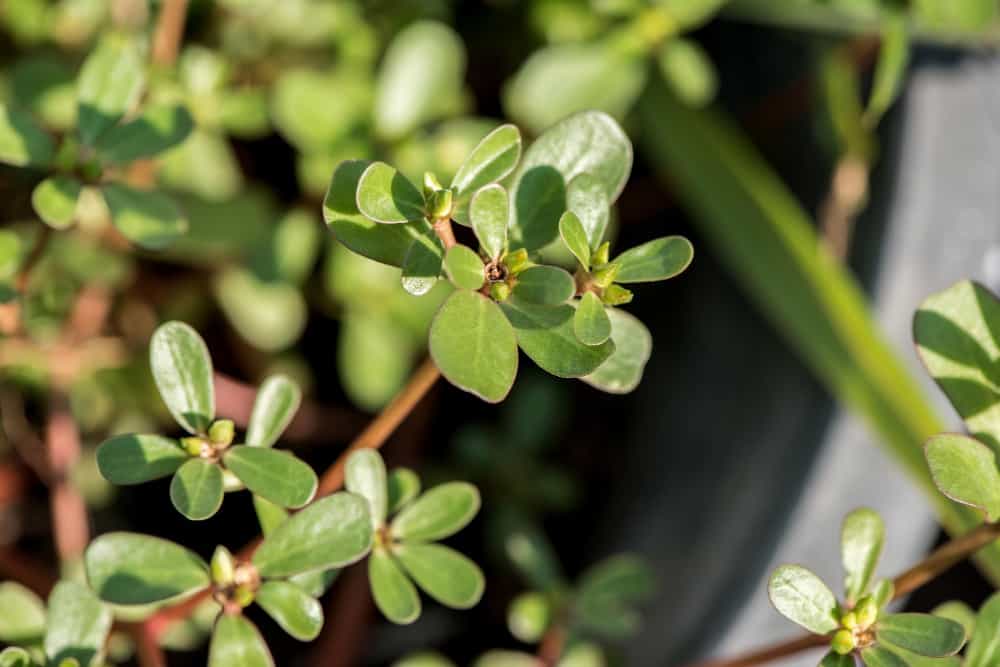
Purslane (Portulaca oleracea) is a common weed in yards, roadsides, and gardens. It grows from seed or flowers with yellow flowers that produce small yellow fruits, almost like tiny grapes.
Purslane weed is a member of the sunflower family. It gets its name from the Latin purslane, which means “trimmed greens,” because it’s considered part of an ancient salad recipe in Rome where herbs such as fennel were mixed with potherbs, including Purslane, to make pesto sauce. It has drought tolerance and is drought resistant but does not like excessive water or wet soil conditions.
Purslane is a succulent found in almost every part of the world. When it first arrives, Purslane grows up to 4 inches tall in your lawn or Garden, but its rapid growth usually doesn’t last long as they proliferate. Purslane is a hardy weed that can survive in harsh conditions, so growing in wet, shady, or even cold areas is not unusual. However, spurge will grow in the same area as Purslane. If you are developing spurge in your lawn or Garden, it will most likely be because of an existing purslane outbreak, making it difficult for the two weeds to grow near each other.
Why Is Purslane Such a nuisance?
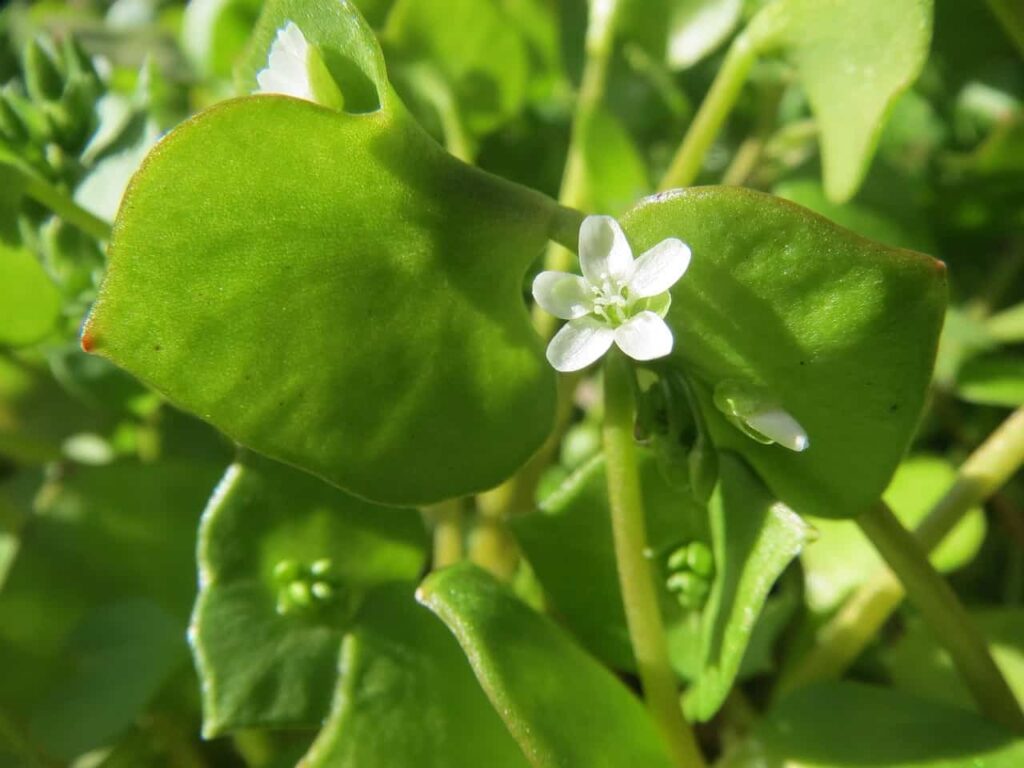
Purslane is an invasive plant that grows quickly and aggressively. It thrives near other plants, so common Purslane will take over if you have plants in your Garden that it doesn’t like (like roses). Not only does Purslane compete with other plants for space and nutrients, but its glossy green leaves make it an easy target for pests and weed killers.
Purslane plants will sometimes take over your entire garden area and grow so mature that it becomes untouchable unless you use pesticides on them. As mentioned above, mature plants produce purslane seeds, which ensure they’ll stay around until next summer, even if you cut them down with a weed whacker.
How to identify Purslane
Purslane is a weed that grows in various colors but is usually green. It has fleshy leaves and small yellow flowers. If you can’t identify Purslane on sight, look for these features to help you identify it:
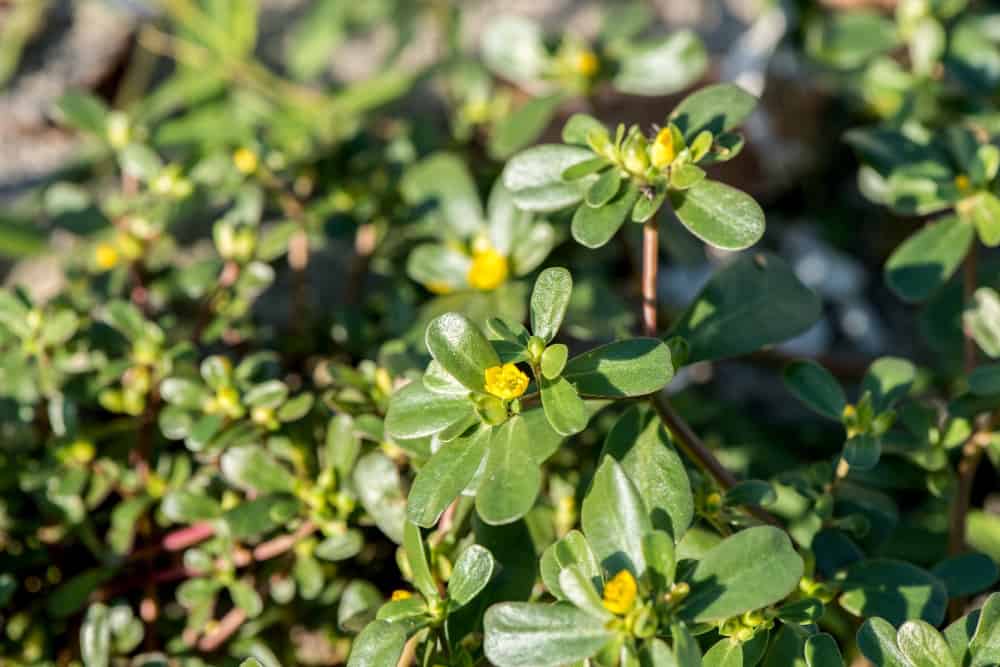
- Green leaves with succulent edges (purslane plants often overgrow, so their leaves may be newly grown).
- Small clusters of yellow flowers are located at the top of each stem (Purslane blooms early in the season before other plants do).
- Vine or slender growth habit; Purslane spreads by runners, so it’s often found in areas where other plants have been cleared.
- Seeds Produced in Mature Plants; Purslane can reproduce by producing seeds near the base of the plant, which will sprout and grow new plants next summer.
- Purslane Red Stems mean that it has purple stems and leaves already grown in garden soil or all over your yard area, making it easy to identify if you see what a red stipe looks like right away! The wild form (without cultivation) will produce flowers that do not turn yellow, while cultivated plants’ flower color may be creamy white, yellow-white, or purple.
Also read: Best Ways How To Stop Plant Pots Falling Over In Wind
How to Get Rid of Purslane Plants
Purslane is a weed that can be a pain to get rid of, especially if you don’t know how to get rid of purslane naturally, do it the easy way. Fortunately, there are several methods that you can use to get rid of this weed – by hand, with a garden sprayer, or with an herbicide or organic mulch-like straws mixed into the soil can also get rid of Purslane. Ensure you follow the instructions carefully and avoid over-pruning your plants, as this will only make the weed harder to remove. Once the Purslane is gone, replant it with a more appropriate plant that won’t invade your Garden again next year!
Single purslane plants can make hundreds of Purslane plants. It is because they can transfer water and nutrients between their leaves and roots, which helps the plant multiply rapidly. So it would be best if you cleared all the plats efficiently. If you worry about how to get rid of purslane in vegetable garden. you can use same method to get rid of Purslane from vegetable .
1.Hand-Pull Purslane
Hand-pulling Purslane plants are the easiest way to get rid of them. Follow these simple steps to remove them from your Garden quickly and easily:
- Do this in a well-lit area, away from pets or children.
- Just grab the plant by its root and pull it out.
- Be sure to wear gloves, so you don’t get stings from the plant’s thorns; gardening gloves will work fine, and latex surgical gloves if you’re especially risk averse about stung!
- Once it’s out of the soil, shake off all loose soil before placing it in an appropriate container.
- Purslane is a weed that overgrows in the Garden and, if left unchecked, may quickly overtake your plants and flowers. Be ready for this weed to take over your Garden if you choose to plant it!
2. Weedwhacker
- 2IN1 DESIGN – Easily rotates 180 degrees from a cordless string trimmer...
- ADJUSTABLE HEIGHT AND SOFT-GRIP HANDLE – Provide convenient, customizable...
- AFS AUTOMATIC FEED SPOOL – Continuously feeds trimmer line without...
If you don’t have the time or ability to cover an area, then using a weed wacker can effectively eradicate Purslane from your Garden. Be sure to use the correct tool for the job – a handheld one is best if you’re targeting small weeds, while an electric one is better for larger plants and tougher weeds. Remember that this method will take longer than other methods, so it may not be suitable if you want quick results!
3.Organic Mulch-Like Straws Mixed Into Soil
Another way to eliminate Purslane is by mixing organic mulch-like straws into your soil before planting your plants. It will help to suppress the weed’s growth and keep it from coming back next season.
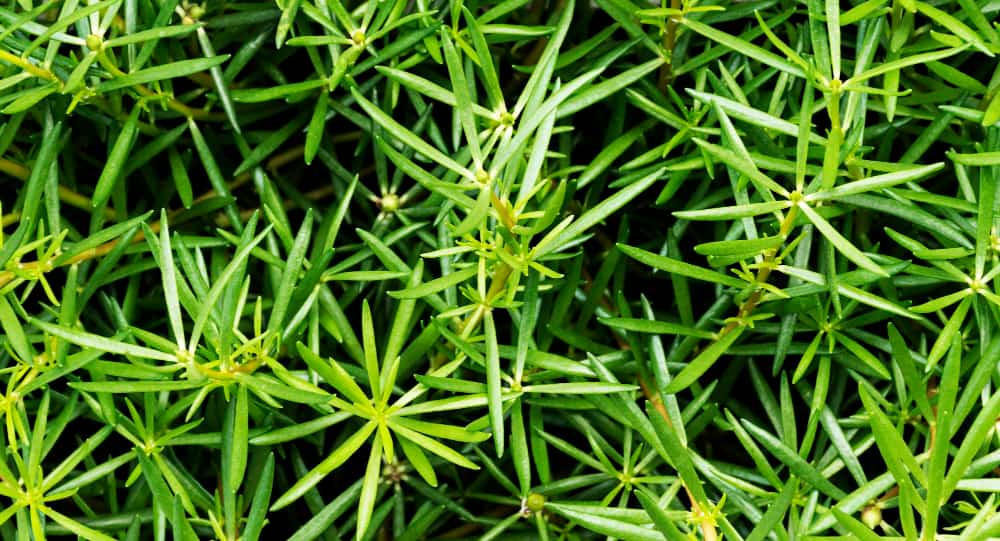
Just mix a few ounces of organic mulch-like straws into an inch or two of potting soil before planting your seedlings. It will provide shade, moisture, and nutrients while suppressing purslane growth. Contact a professional landscaper or weed control specialist if you still have trouble eliminating Purslane from your Garden. They will have more effective methods for dealing with this pesky weed.
4.Apply Pre-Emergent Weed Killer
If all else fails, you can try using a pre-emergent herbicide to kill Purslane before it flowers and starts producing purslane weed seeds. When using this pesticide, be careful not to inhale it or get it in contact with your skin. Apply the solution directly to the weed, watering it after application. Keep an eye on your plants for any sign of toxicity (small brown blotches on foliage, distortions in growth), and take action if symptoms develop. Regarding eliminating weeds, 2,4-D or Roundup, both effective against weeds, may be sprayed.
5.Re-Seed Grass
If you’re struggling to get rid of Purslane, give re-seeding grass a try. This weed flourishes in no time and can take over your Garden, but this simple herbicide-free method works! You need to follow a few easy steps: First, identify the area where the Purslane grew abundantly. Second, sow the seeds directly into those areas, and watch them disappear! Once the weed is gone for good, you’ll be able to enjoy peace of mind knowing that your Garden isn’t infested with this pesky weed anymore! The process is so simple that even a beginner can do it.
6.Cover with plastic
In soil solarization, you can use black plastic sheeting to cover soil where purslane flowers have been spotted. Covering an area with a black plastic tarp for 3-4 weeks will help to prevent weeds and other plants from growing in the cover area. This approach successfully manages Purslane and may be applied to various plants. All the plants under the cover will be dead from not getting sunlight.
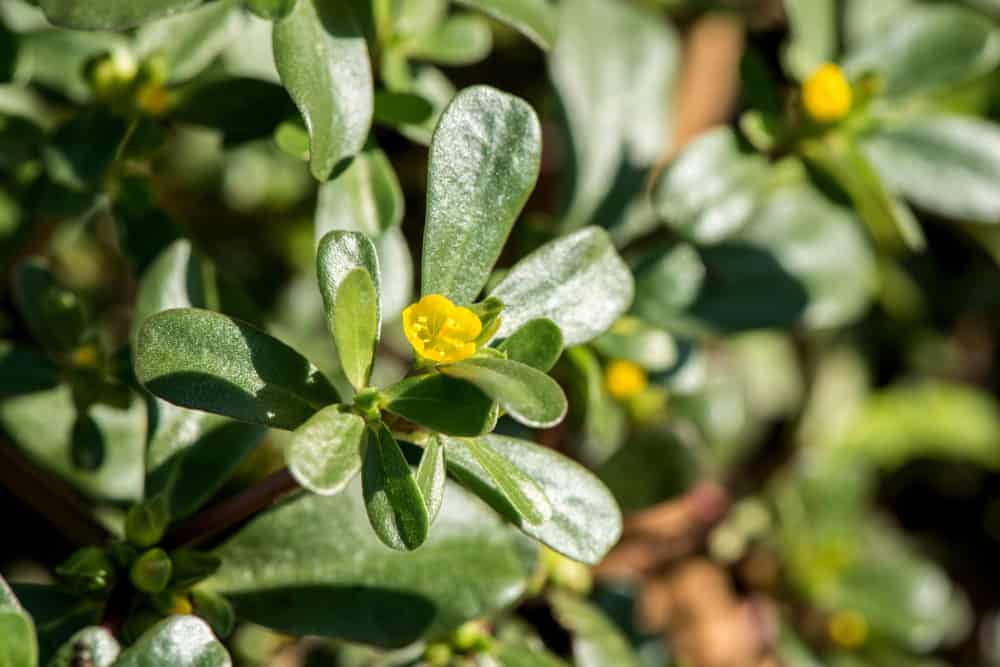
How to Preventing Future Growth
- Remove the Stem :- Purslane is an annual that proliferates. If you want to prevent future growth of this weed, remove the stem before it flowers so that new plants will not arise. Once Purslane has taken over an area, it’s hard to get it out without killing the plant.
- Kill the Root System :- Purslane thrives in soils rich with organic matter and nutrients, so chopping off its root system may effectively eliminate this weed from your Garden entirely! To kill purslane’s roots, first, dig out a small area and water it thoroughly. Then, pour a potent garden herbicide like glyphosate over the place and let it work its magic. While working with this chemical, wear gloves and safety glasses to avoid skin rashes.
- Clear the Area :– Use a herbicide like a glyphosate or horticultural oil to kill Purslane’s roots and foliage, then use a tiller to turn over the soil until it is bare. If these methods fail, you may need to clear the area thoroughly. Be sure to raze any other plants that have taken root in this weed-infested land!
Read More :- How to Get Rid of Ants in the Garden Soil?
Frequently Asked Questions
What happens if you don’t get rid of Purslane?
Purslane is a weed that grows best in moist, fertile soil. It can take over your Garden and slowly crowd out other plants if you do not get rid of it. Purslane will also create a dense green carpet on the ground that blocks sunlight from reaching the roots of other plants, making them weak and susceptible to fungus growth.
Can I use Roundup on Purslane?
Yes, you can use Roundup on Purslane. However, be aware that the herbicide may also kill other plants in the large area, so it is essential to follow instructions carefully and only apply the herbicide when necessary.
Is Purslane Dangerous?
Purslane is not generally considered to be dangerous. However, it should be avoided if you are pregnant or breastfeeding because of the possibility of causing minor gastrointestinal upset. Purslane can also cause excessive sweating and nausea in some people, so it’s important to start slowly and gradually increasing your dosage until you find the right balance for yourself.
What should I do if Purslane is blooming in my Garden despite my best efforts?
Purslane control is not always as easy a task as people think. They apply herbicide directly onto the soil surface around each plant and grow annual flowers near Purslane. Hence, they attract pollinators which will help suppress their growth. If the above methods don’t work, you may need to call an experienced professional who will use more aggressive measures like chopping off entire stems at ground level.
Conclusion
The time has come to take action against Purslane. To get rid of it for good, apply some above tips to Purslane plants, and you should be able to see results in a few days!
Don’t give up if you’ve struggled with this weed for too long! There are natural ways that can help keep your Purslane under control. For example, use mulches, organic pest controls, and hostas instead of chemicals. Not only will these techniques make it harder for the weed to thrive, but they’re also safe and environmentally-friendly options.
In case you still haven’t gotten rid of the Purslane yet, don’t worry. Just email us with the issues we’ll send over an expert right away and give you some more tips on How to Get Rid of Purslane in the Garden.


